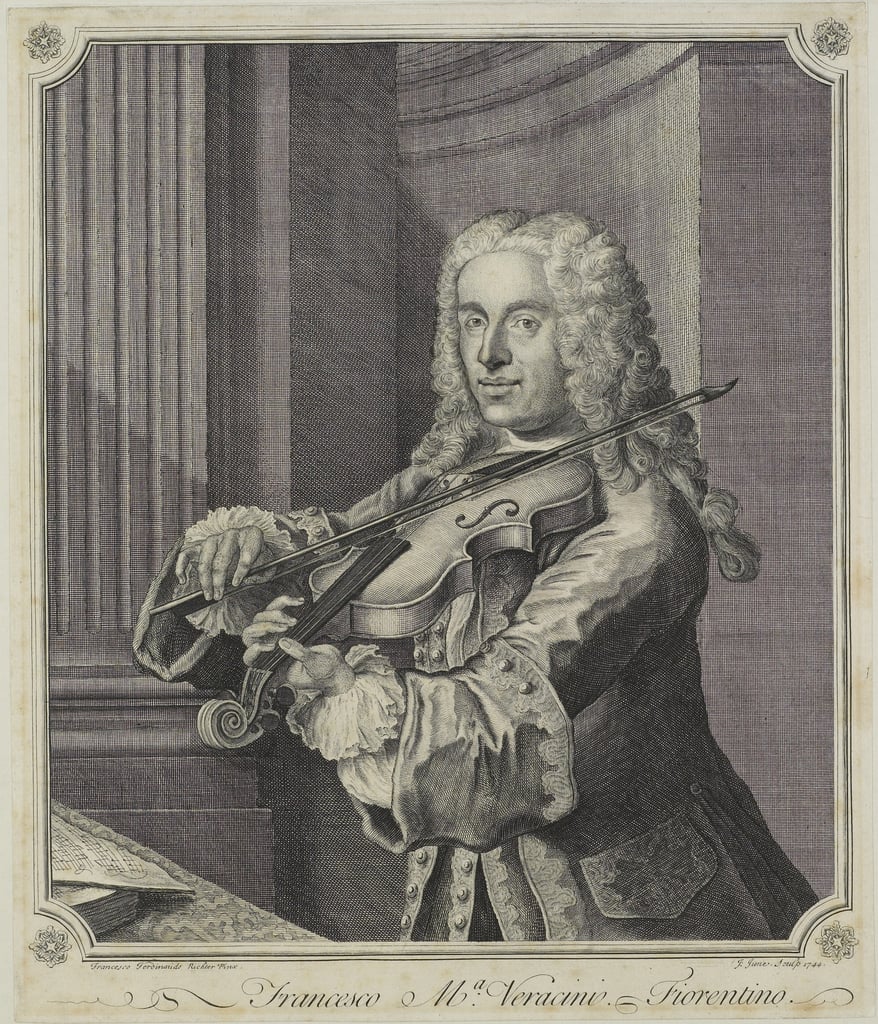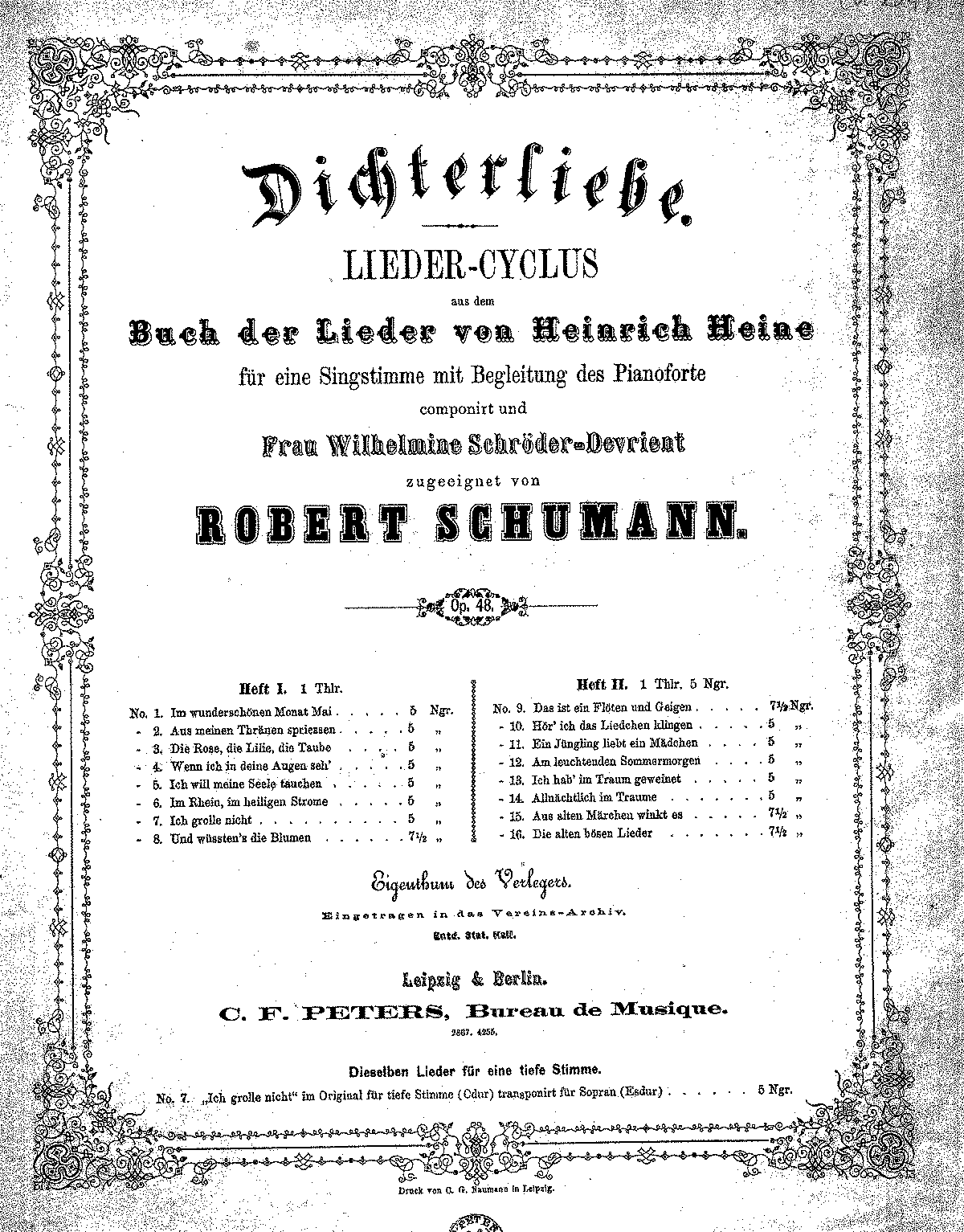|
Ferdinand David (musician)
Ferdinand Ernst Victor Carl David (; 19 June 181018 July 1873) was a German virtuoso violinist, composer and conductor. Biography Born in the same house in Hamburg where Felix Mendelssohn had been born the previous year, David was raised Jewish but later converted to Protestant Christianity. His sister was a concert pianist. David was a pupil of Louis Spohr and Moritz Hauptmann from 1823 to 1824 and in 1826 became a violinist at Königsstädtisches Theater in Berlin. In 1829 he was the first violinist of the string quartet of Baron (father of Karl Eduard von Liphart) in Dorpat, and he undertook concert tours in Riga, Saint Petersburg and Moscow. In 1835 he became concertmaster (''Konzertmeister'') at the Gewandhaus in Leipzig working with Mendelssohn. In Leipzig, for about forty years, he was also the first violinist of the Leipzig Quartet. David returned to Dorpat to marry Liphardt's daughter Sophie. In 1843 David became the first professor of violin (''Violinlehrer'') ... [...More Info...] [...Related Items...] OR: [Wikipedia] [Google] [Baidu] |
Ferdinand David
Ferdinand is a Germanic name composed of the elements "journey, travel", Proto-Germanic , abstract noun from root "to fare, travel" (PIE , "to lead, pass over"), and "courage" or "ready, prepared" related to Old High German "to risk, venture." The name was adopted in Romance languages from its use in the Visigothic Kingdom. It is reconstructed as either Gothic or . It became popular in German-speaking Europe only from the 16th century, with Habsburg rule over Spain. Variants of the name include , , , and in Spanish, in Catalan, and and in Portuguese. The French forms are , '' Fernand'', and , and it is '' Ferdinando'' and ''Fernando'' in Italian. In Hungarian both and are used equally. The Dutch forms are and ''Ferry''. There are numerous short forms in many languages, such as the Finnish . There is a feminine Spanish, Portuguese, and Italian form, . Royalty Aragón/León/Castile/Spain * Ferdinand I of Aragon (1380–1416) the Just, King in 1412 * Fe ... [...More Info...] [...Related Items...] OR: [Wikipedia] [Google] [Baidu] |
Leipzig
Leipzig (, ; ; Upper Saxon: ; ) is the most populous city in the States of Germany, German state of Saxony. The city has a population of 628,718 inhabitants as of 2023. It is the List of cities in Germany by population, eighth-largest city in Germany and is part of the Central German Metropolitan Region. The name of the city is usually interpreted as a Slavic term meaning ''place of linden trees'', in line with many other Slavic placenames in the region. Leipzig is located about southwest of Berlin, in the southernmost part of the North German Plain (the Leipzig Bay), at the confluence of the White Elster and its tributaries Pleiße and Parthe. The Leipzig Riverside Forest, Europe's largest intra-city riparian forest, has developed along these rivers. Leipzig is at the centre of Neuseenland (''new lake district''). This district has Bodies of water in Leipzig, several artificial lakes created from former lignite Open-pit_mining, open-pit mines. Leipzig has been a trade city s ... [...More Info...] [...Related Items...] OR: [Wikipedia] [Google] [Baidu] |
Francesco Maria Veracini
Francesco Maria Veracini (1 February 1690 – 31 October 1768) was an Italian composer and violinist, perhaps best known for his sets of violin sonatas. As a composer, according to Manfred Bukofzer, "His individual, if not subjective, style has no precedent in baroque music and clearly heralds the end of the entire era", while Luigi Torchi maintained that "he rescued the imperiled music of the eighteenth century", His contemporary, Charles Burney, held that "he had certainly a great share of whim and caprice, but he built his freaks on a good foundation, being an excellent contrapuntist". The asteroid 10875 Veracini was named after him. Life Francesco Maria Veracini was born at about 8:00 a.m. on 1 February 1690 in the family house on the via Palazzuolo, parish of San Salvatore, Ognissanti, Florence. The second and only surviving son of Agostino Veracini, a pharmacist and undertaker (and ironically one of the few Veracinis who was not a violinist, even as an amateur), ... [...More Info...] [...Related Items...] OR: [Wikipedia] [Google] [Baidu] |
Breitkopf & Härtel
Breitkopf & Härtel () is a German Music publisher, music publishing house. Founded in 1719 in Leipzig by Bernhard Christoph Breitkopf, it is the world's oldest music publisher. Overview The catalogue contains over 1,000 composers, 8,000 works and 15,000 music editions or books on music. The name "Härtel" was added when Gottfried Christoph Härtel took over the company in 1795. In 1807, Härtel began to manufacture pianos, an endeavour which lasted until 1870. Breitkopf pianos were highly esteemed in the 19th century by such pianists as Franz Liszt and Clara Schumann. In the 19th century the company was for many years the publisher of the ''Allgemeine musikalische Zeitung'', an influential music journal. The company has consistently supported composers and had close editorial collaboration with Ludwig van Beethoven, Beethoven, Joseph Haydn, Haydn, Felix Mendelssohn, Mendelssohn, Robert Schumann, Schumann, Frédéric Chopin, Chopin, Franz Liszt, Liszt, Richard Wagner, Wagner a ... [...More Info...] [...Related Items...] OR: [Wikipedia] [Google] [Baidu] |
Trombone Concertino (David)
Ferdinand David's Concertino for Trombone and Orchestra, Op. 4, was composed in 1837. It was dedicated to Karl Traugott Queisser, who was a good friend of David, and also played in the Gewandhaus Orchestra, where David was concertmeister. The piece was premiered at the Gewandhaus with Queisser playing the solo part and Mendelssohn conducting.Lindberg, Christian"History of the Concertino"/ref> It was an immediate success. It consists of 3 movements: *I. Allegro maestoso *II. Marcia funebre (Andante) *III. Allegro maestoso. This score is written for the following instruments: Solo Trombone, 2 Flutes, 2 Oboes, 2 Clarinets 2 Bassoons, 4 Horns, 2 Trumpets in Eb, 3 Trombones, Timpani, and Strings The second movement was arranged for Violin and Piano by David and was played at his own funeral. A performance of the concerto usually lasts around 16–17 minutes. The piece has been recorded by Brett Baker, Michel Becquet, Michael Bertoncello, Cristian Ganicenco, Jürgen Heinel, Massi ... [...More Info...] [...Related Items...] OR: [Wikipedia] [Google] [Baidu] |
Symphony
A symphony is an extended musical composition in Western classical music, most often for orchestra. Although the term has had many meanings from its origins in the ancient Greek era, by the late 18th century the word had taken on the meaning common today: a work usually consisting of multiple distinct sections or movement (music), movements, often four, with the first movement in sonata form. Symphonies are almost always scored for an orchestra consisting of a string section (violin, viola, cello, and double bass), Brass instrument, brass, Woodwind instrument, woodwind, and Percussion instrument, percussion Musical instrument, instruments which altogether number about 30 to 100 musicians. Symphonies are notated in a Full score, musical score, which contains all the instrument parts. Orchestral musicians play from parts which contain just the notated music for their own instrument. Some symphonies also contain vocal parts (e.g., Ludwig van Beethoven, Beethoven's Symphony No. 9 (B ... [...More Info...] [...Related Items...] OR: [Wikipedia] [Google] [Baidu] |
Lied
In the Western classical music tradition, ( , ; , ; ) is a term for setting poetry to classical music. The term is used for any kind of song in contemporary German and Dutch, but among English and French speakers, is often used interchangeably with "art song" to encompass works that the tradition has inspired in other languages as well. The poems that have been made into lieder often center on pastoral themes or themes of romantic love. The earliest ''Lieder'' date from the late fourteenth or early fifteenth centuries, and can even refer to from as early as the 12th and 13th centuries. It later came especially to refer to settings of Romantic poetry during the late eighteenth and nineteenth centuries, and into the early twentieth century. Examples include settings by Joseph Haydn, Wolfgang Amadeus Mozart, Ludwig van Beethoven, Franz Schubert, Robert Schumann, Johannes Brahms, Hugo Wolf, Gustav Mahler or Richard Strauss. History Terminology For German speakers, the ... [...More Info...] [...Related Items...] OR: [Wikipedia] [Google] [Baidu] |
String Sextet
In european classical music, classical music, a string sextet is a composition written for six string instruments, or a group of six musicians who perform such a composition. Most string sextets have been written for an ensemble consisting of two violins, two violas, and two cellos. Notable string sextets Among the earliest works in this form are the nine string sextets opus number, Op. 23 by Luigi Boccherini, written in 1776. Other notable string sextets include the String Sextet No. 1 (Brahms), String Sextets Op. 18 and String Sextet No. 2 (Brahms), 36 by Brahms, Dvořák's String Sextet (Dvořák), Op. 48, Tchaikovsky ''Souvenir de Florence'', Op. 70, Schoenberg's ''Verklärte Nacht'', Op. 4, Erich Wolfgang Korngold Op. 10, Erwin Schulhoff's String Sextet of 1924, and Charles Wuorinen's String Sextet of 1989. Less usual combinations More unusual combinations for a string sextet: * three violins, viola and two cellos: Ferdinand David (musician), Ferdinand David (1810–187 ... [...More Info...] [...Related Items...] OR: [Wikipedia] [Google] [Baidu] |
Violin Concerto
A violin concerto is a concerto for solo violin (occasionally, two or more violins) and instrumental ensemble (customarily orchestra). Such works have been written since the Baroque period, when the solo concerto form was first developed, up through the present day. Many major composers have contributed to the violin concerto repertoire. Traditionally a three-movement work, the violin concerto has been structured in four movements by a number of modern composers, including Dmitri Shostakovich, Igor Stravinsky, and Alban Berg. In some violin concertos, especially from the Baroque and modern eras, the violin (or group of violins) is accompanied by a chamber ensemble rather than an orchestra—for instance, in Vivaldi's '' L'estro armonico'', originally scored for four violins, two violas, cello, and continuo, and in Allan Pettersson's first concerto, for violin and string quartet. List of violin concertos The following concertos are presently found near the center of the mainst ... [...More Info...] [...Related Items...] OR: [Wikipedia] [Google] [Baidu] |
Switzerland
Switzerland, officially the Swiss Confederation, is a landlocked country located in west-central Europe. It is bordered by Italy to the south, France to the west, Germany to the north, and Austria and Liechtenstein to the east. Switzerland is geographically divided among the Swiss Plateau, the Swiss Alps, Alps and the Jura Mountains, Jura; the Alps occupy the greater part of the territory, whereas most of the country's Demographics of Switzerland, 9 million people are concentrated on the plateau, which hosts List of cities in Switzerland, its largest cities and economic centres, including Zurich, Geneva, and Lausanne. Switzerland is a federal republic composed of Cantons of Switzerland, 26 cantons, with federal authorities based in Bern. It has four main linguistic and cultural regions: German, French, Italian and Romansh language, Romansh. Although most Swiss are German-speaking, national identity is fairly cohesive, being rooted in a common historical background, shared ... [...More Info...] [...Related Items...] OR: [Wikipedia] [Google] [Baidu] |
Klosters
Klosters is a Switzerland, Swiss village in the Prättigau, politically part of the Municipalities of Switzerland, municipality of Klosters-Serneus, which belongs to the political district Prättigau/Davos Region, Prättigau/Davos in the Cantons of Switzerland, canton of Grisons. In 2021, the municipality shortened its name to Klosters. Klosters itself consists of the two main parts Klosters Dorf ('Village') and Kloster Platz ('Place'), and the settlements Selfranga, Äuja, Monbiel. Together with neighbouring Serneus, the two villages form the former municipality of Klosters-Serneus. On 1 January 2016, the former municipality of Saas im Prättigau merged into Klosters-Serneus. The village's ski resort lies from Zürich, the nearest international airport. Klosters is north from Davos and part of its extended ski area. History Klosters is first mentioned in 1222 as ''ecclesiam sancti Iacobi''. In 1436 it was mentioned as ''zuo dem Closter''. It was part of one of the Three Leagues ... [...More Info...] [...Related Items...] OR: [Wikipedia] [Google] [Baidu] |



